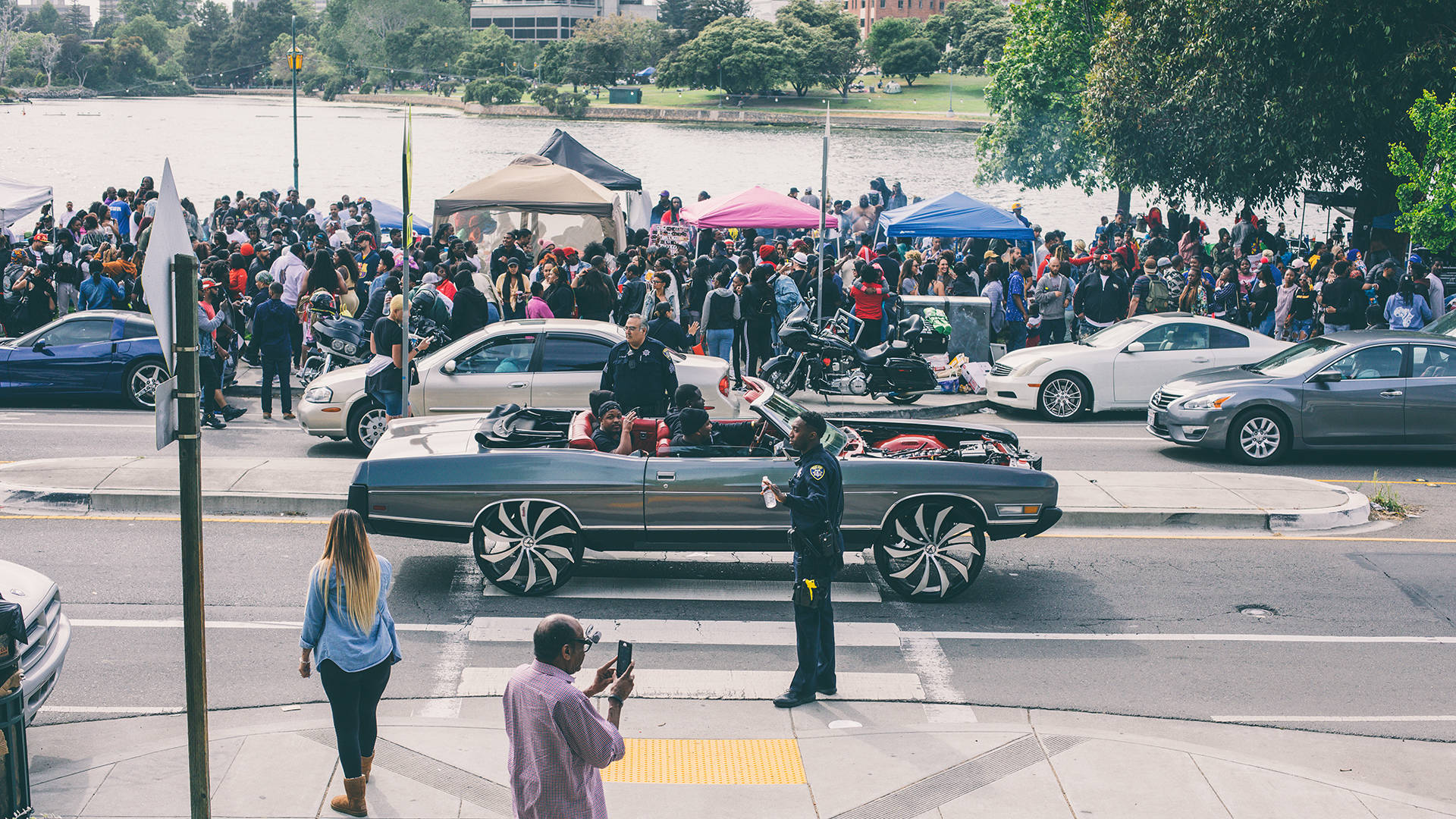The “BBQ’n While Black” protest. Marshawn Lynch’s community bike ride. The East Oakland Collective‘s grassroots efforts to help the homeless. What do these things have in common? Regular readers of Pendarvis Harshaw’s KQED Arts column will know that these are examples of Oakland’s African-American community’s resilience in the face of gentrification and displacement.
You’ve likely heard stories of friends and neighbors leaving The Town for cities with cheaper rents, like Antioch and Sacramento. You’ve probably noticed that homeless encampments in Oakland have grown substantially in the past few years, and that there are a lot more unsheltered people on Oakland’s streets. And you’ve seen the viral videos of the white woman who called the cops on a black family having a barbecue at Lake Merritt (prompting “BBQ’n While Black”); or the white man who threw a homeless man’s belongings into the same lake; or read about white residents calling the police on black firefighters doing their jobs in the Oakland hills—the list goes on.
In a recent conversation on Facebook Live, Harshaw and I took a look at some of the statistics that tell us how much Oakland has actually changed in the past 15 years, as well as the human stories and anecdotes behind the numbers. How has Oakland’s culture shifted as its black population, which in 1980 made up 48 percent of the city’s total population, now hovers around 24 percent? What legislation has made low-income renters vulnerable to eviction and accelerated the homelessness crisis? What are Oakland natives, and black Oaklanders especially, doing to fight cultural erasure?
Watch below as we investigate these questions, and keep up with Harshaw’s column as he continues to explore the issues facing his hometown.


